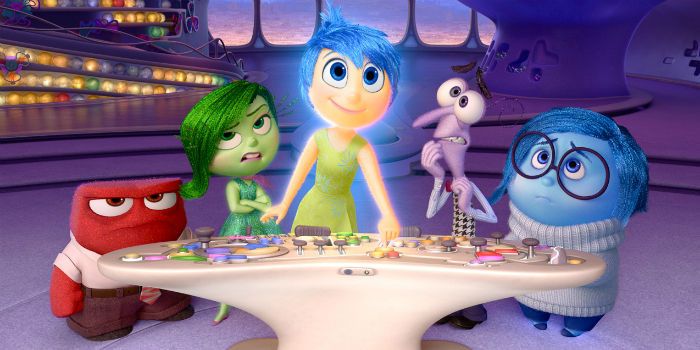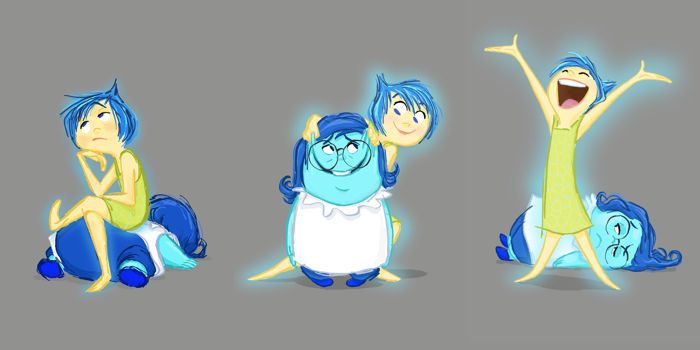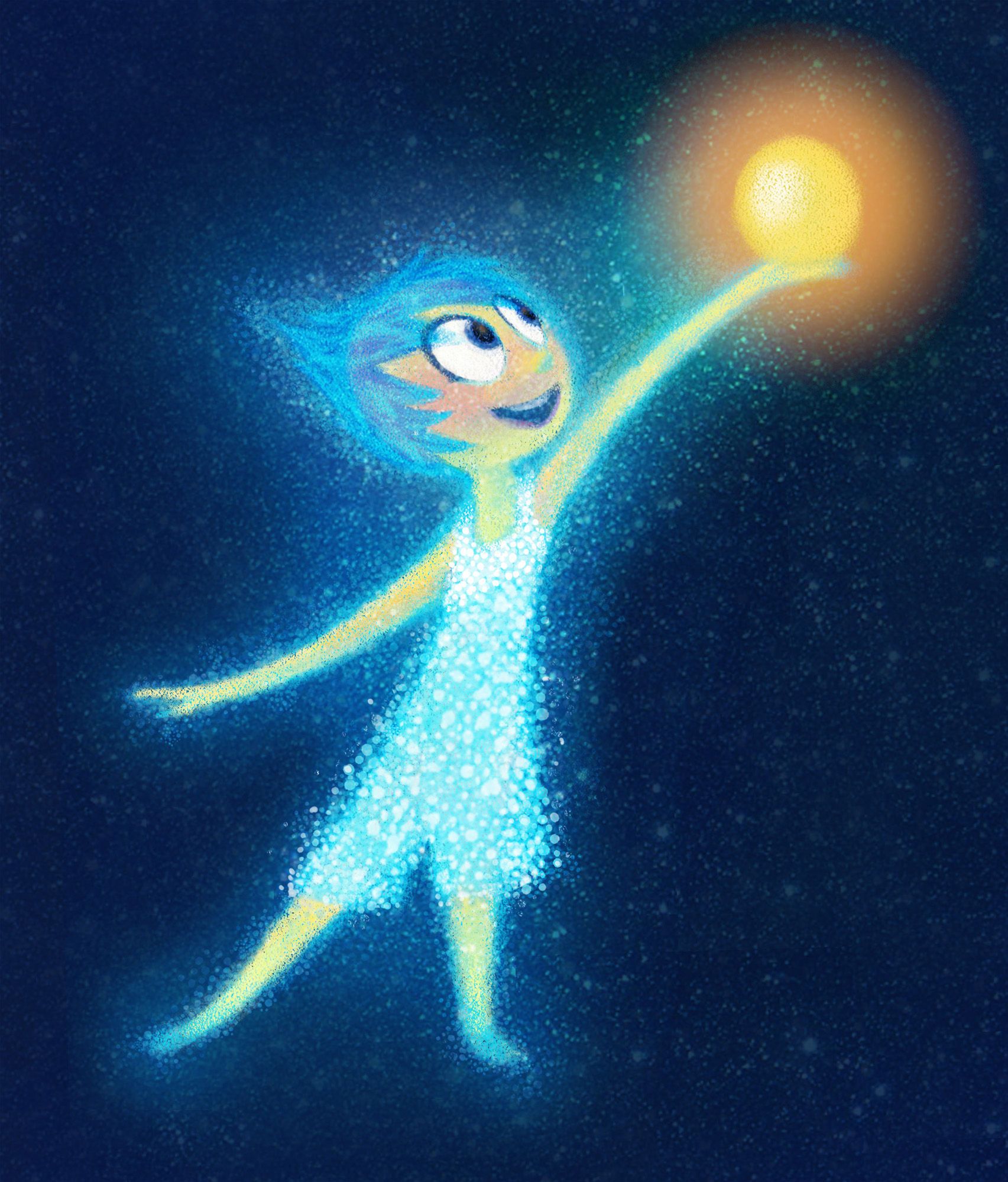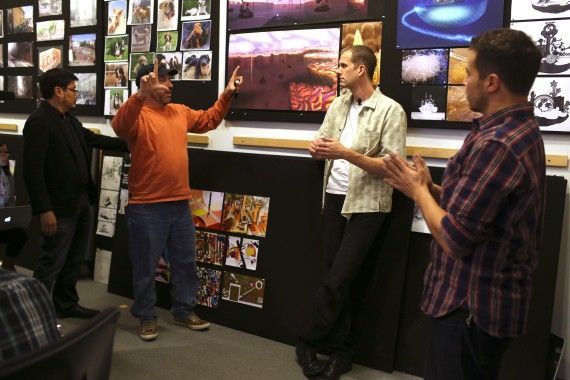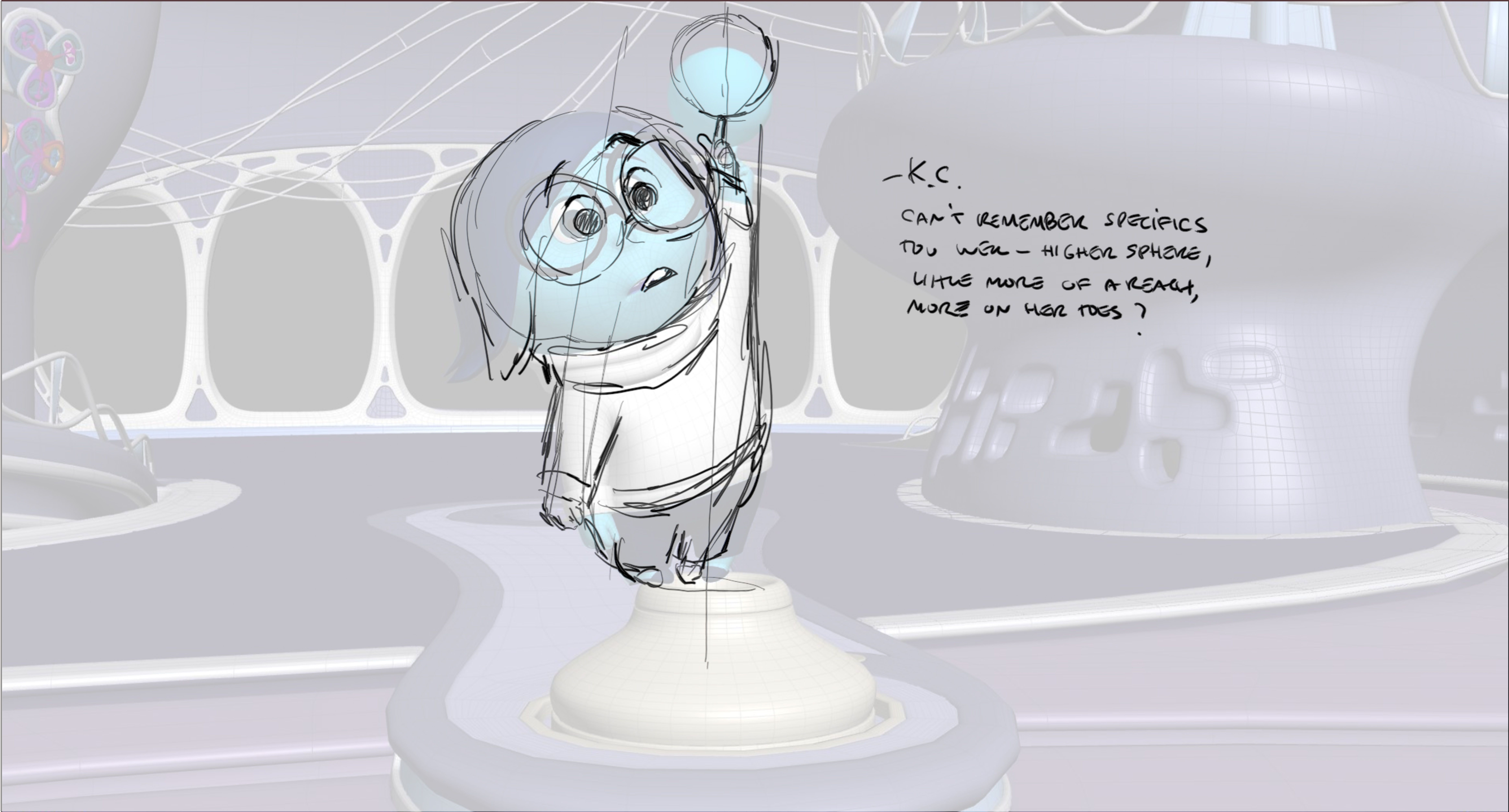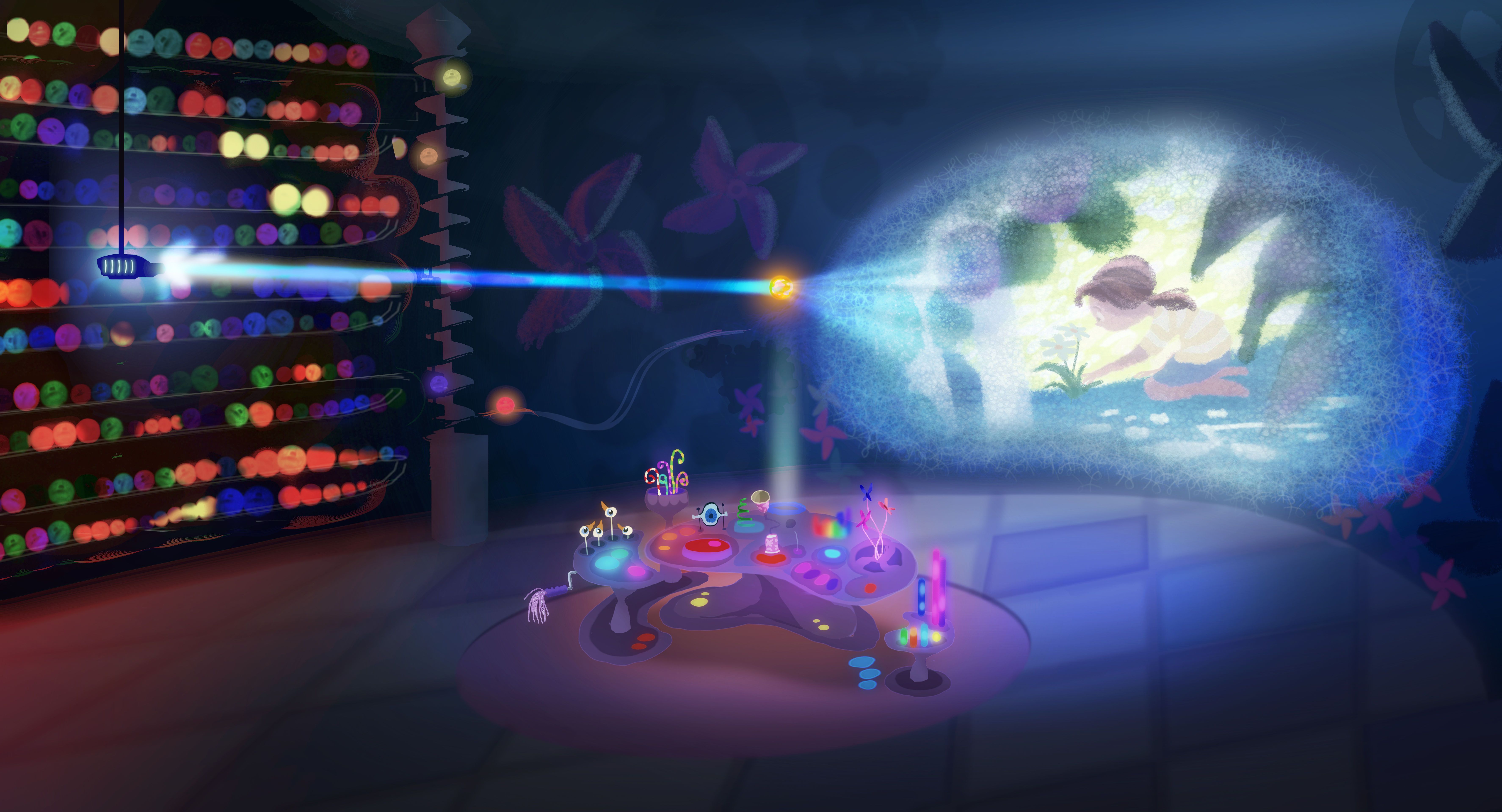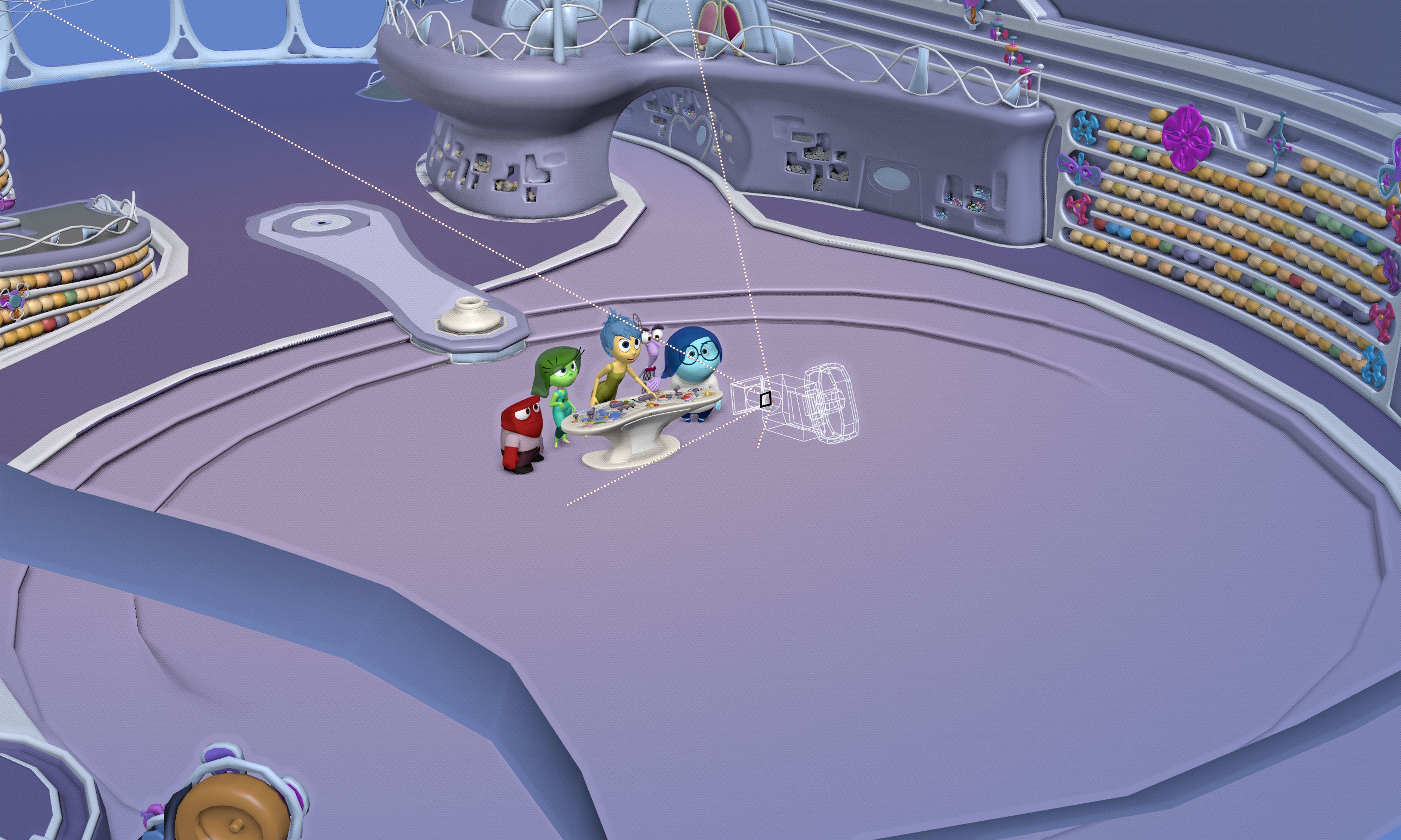Up until very recently, everything we knew about Pixar's upcoming animated feature Inside Out was based on what we could gather from the amusing trailers, character posters and the little bits of information gleaned from director Pete Docter (Up, Monster's Inc.). This is a movie about the little voices inside our head. More specifically our emotions, as depicted in the film by how an 11-year-old girl struggles to adjust to life after a move from Minnesota to San Francisco, and how her dueling emotions Joy (Amy Poehler), Sadness (Phyllis Smith), Anger (Lewis Black), Fear (Bill Hader) and Disgust (Mindy Kaling) play into it.
Thanks to a trip to Pixar HQ in Emeryville, CA last week, we're excited to share never-bef0re-seen concept art, production stills and some inside scoop on what to expect from the film (Hint: more "Aww" than "Haha").
In looking through the concept art like the photo above, Joy and Sadness are center stage. This is of course by design in that the film is really about how we all wrestle with and learn from all of our emotions and most importantly, how they evolve over time. With regard to Joy and Sadness in the confines of the film, they end up on quite an adventure together and one that involves surprises in power dynamics. We spoke to director Pete Docter and producer Jonas Rivera about the emotional dynamics, specifically that of Joy and Sadness and how Joy has to come to an understanding of why not all our memories can or should be joyful.
[Click to enlarge]
On the film's theme of how emotions and personality are related, and how the joyful innocence of childhood evolves as we reach adulthood:
Pete Docter: We wanted to make a straight point for Joy that her time is limited ... that Joy is looking down the barrel. She's only going to be kind of running things for a little amount of time and she's like, 'I'm not going to let that happen.' So we wanted to kind of really showcase that to the audience as well, but Joy is not running in dad or mom [Dad is run by Anger, Mom by Sadness], it's one of these other characters. We weren't trying to say anything sort of blanket about men or women at all, but I think there are people that we observed that tend to have a temperament – everybody has a temperament and though they might be happy, they'll go back to being sort of sullen, their general sullen temperament or angry.
Jonas Rivera: There's something about this movie and about memories and honoring that. But also the fact that you can't always be eight years old.
Docter: I think ultimately it's something that we can all relate to. We all want happiness in our life. I mean there's so many books on like how to be happy and what you need for happiness and you want that for your kid too, you want your kid to be happy. We literally tell our kids don't to be sad, and yet there is a real value to all the other emotions that is part of the richness of life and it's not until you really recognize that I think you really have the ability to connect with the world in a deeper way. … The ups and downs of life and the things that hurt. When you fall and scrape your knee those are things that are going ultimately really shape you and make you into a richer more rounded person. … And with sadness specifically, in America you read about people medicating to avoid sadness. They don't want to experience sadness and yet it's such a vital part of being human.
[Click to enlarge]
Co-director Ronnie del Carmen on what fact-based information they learned from scientists and psychologists that had the biggest impact on the film:
To me it's me learning about emotions and that they're not able to drive you; they make you feel. If you are angered by something, that is you, you feel that your emotions are you. We had that problem in the beginning, 'Aren't Riley's emotions her?' So we had to ask experts because we had this conundrum: 'They're inside our head, aren't they making decisions?' [We thought] collectively they were Riley's personality, so the experts told us it's like our emotions are there to actually impel you, to actually suffuse you, to prepare you to behave, but it happens so quickly that you react right away. But you are not your emotions, you can choose not to act out your anger, that helped us because it separated our characters from Riley, that they are not only that guardians, they believe in what they do. Emotions learn to calibrate. When you're a kid you have these very pure, single-minded emotions and when you get older you have sophisticated versions. Sadness grows up to be empathy, so all of those emotions have their kind of bad side, like sadness can lead you to depression but sadness is there to prepare you so that you can express that you're sad.
[Click to enlarge]
Inside Out's director of photography Patrick Lin explains how they decided to manipulate camera lenses and angles to differentiate between the real world Riley lives in and the inside world of her mind and emotions:
One thing we found most interesting about Inside Out is the two worlds. The inside mind world, and the outside human world. The outside world is based on our real world, so the camera should feel realistic, but flawed and imperfect. On the inside, the world is imaginative and virtual, so the camera can be perfect. We rented two lenses: the Cooke S4 and the ultra-primes, and we shot using each of these lenses with a big distortion chart. What we found is, one lens, the Cooke, has more pronounced distortion than the other. So we measured the curvature of each lens, and input that data into our virtual lenses. This is the first time that Pixar modeled our virtual lenses on real lenses.
[Click to enlarge]
Lin continues:
This movie is about contrast, so I have to rate Riley’s emotions as well. After you put them together, you can see they start off synchronized, and through act one and two they are being driven apart until you hit the end of act two, which has the most contrast between the two. At the climax of the film, the visual intensity is at maximum in both the inside and outside world, so there’s kind of a crescendo it builds to.
-
Inside Out opens in the U.S. on June 19th

